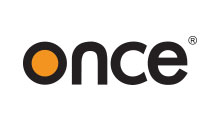
Lighting for Swine Units
By: Dr. Nina Taylor & AHDB
Abstract
The behaviour of the progenitor species of the pig and the anatomy and physiology of the porcine eye suggest that the domesticated pig is best adapted for dim levels of natural light. This knowledge can therefore be used to specify lighting for domesticated pigs kept either indoors or outdoors. In general, English law is based on sound scientific evidence.
Pigs use vision to discriminate between each other and select food containers, demonstrating that vision plays a role in everyday behaviours useful in commercial situations, and that correct lighting is important on pig units.
Pigs show some seasonal variation in reproductive success, with summer reduced fertility linked mainly to high temperatures, but with the potential to be affected by day length. In wild boar, decreasing daylengths stimulate reproductive behaviour, and a similar response has been reported in commercial pigs under experimental conditions. Stimulating puberty in boars by decreasing daylengths will also hasten the onset of boar taint; however lighting is a minor factor in this, with sire line traits of much higher impact. Piglets and weanling pigs may benefit from additional hours of light in order to locate food sources, but long term 24h light has proven detrimental effects on welfare for pigs of all ages and should be avoided. Keeping pigs in 24h dark has less detrimental effects than constant light, but still provides poorer welfare than a cyclical light: dark routine.
Current legislation on lighting is based on the ability of the stockkeeper to inspect animals, rather than the ability of the pigs to conduct visually oriented behaviours. There is limited evidence in the literature on the effects of spectra (coloured lights or colour balance of lights) on pig production. When red light has been used, it is likely to be perceived as dark by pigs. Dawn and dusk periods of phased illuminances have not been researched, but could provide helpful time cues to the pigs and could reduce the dazzle or confusion of rapid light change, and competition at timed feeders.
Current knowledge on flicker sensitivity suggests that the pig will have similar critical flicker fusion to the cat, and be unable to detect the flicker of correctly functioning fluorescent lights. Natural light differs in many respects from artificial light and few controlled studies have been published comparing these two sources. High levels of natural illuminance (including UV) are likely to cause sun burn and heat stroke in the pig, which must be given relief in the form of shade or wallows. Whilst pigs need natural light or UV to produce vitamin D3, deficiency of vitamin D is not considered to be a problem, and vitamin D2 is provided in a balanced diet.
This report highlights a number of areas where research onto the effects of lighting on pigs is insufficient for accurate conclusions to be drawn and where current knowledge is inconclusive or contradictory. Due to developments in commercial pig production, information on seasonality in pigs would be beneficial; if the pig is now photorefractory, then light regimes and hours of lighting could be excessive or under used, wasting energy or providing a suboptimal environment. Whilst the spatial acuity of pigs is poorer than humans, their ability to complete visually mediated biologically relevant tasks under different illuminances needs to be established; in addition, other parameters of lighting and their effects on pigs should also be examined.